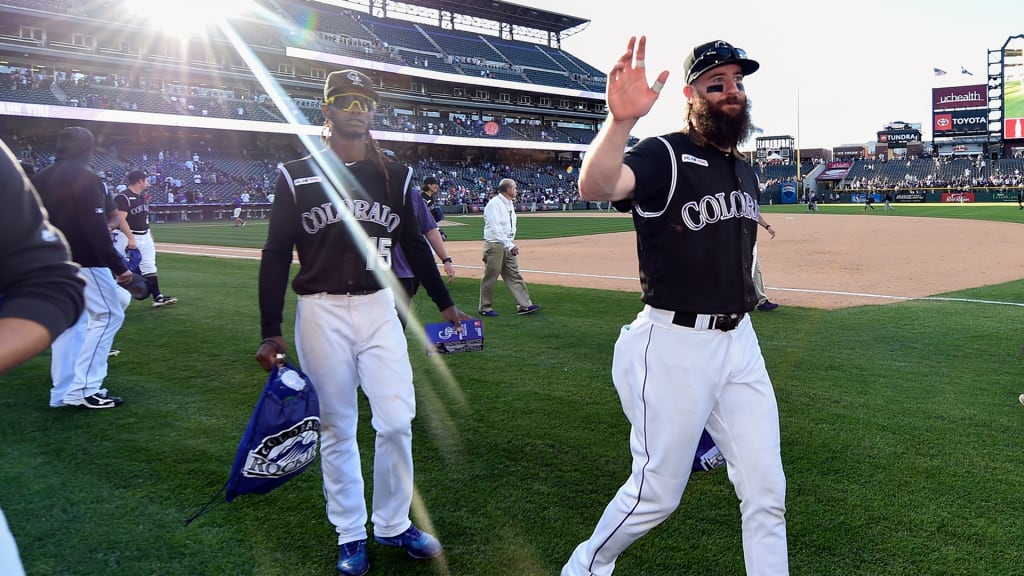
DENVER -- After going to the postseason in 2017 and '18, the Rockies finished 71-91 in 2019 and needed a win on the final day of the season to escape the National League West cellar.
Here are five questions that the Rockies, and their fans, will spend the offseason mulling.
1. How much financial flexibility do the Rockies have?
The struggle this year came despite a club-record payroll of $156.5 million -- 12th-highest in the Majors. It’s possible the club will sit with shortstop Trevor Story to discuss a multiyear deal, and there are several other arbitration cases. Two of them are lefty starting pitcher Kyle Freeland and outfielder David Dahl, who was named to the NL All-Star team in his first full Major League. Both reached the Super Two threshold. They will join Story, righty starter Jon Gray, righty reliever Scott Oberg, catcher Tony Wolters and righty reliever Carlos Estévez.
There’s also the matter of $35.5 million committed next year to relievers Wade Davis, Bryan Shaw and Jake McGee -- all coming off struggles. General manager Jeff Bridich has said the payroll will grow, but responsibly. The poor finish suggests that spending more may be in order. The Rockies' future revenue is more predictable thanks to a new multiyear deal with AT&T Sports Networks announced at the end of September, but that contract doesn’t kick in until after the 2020 season.
2. Will they actually make moves?
On one hand, righties German Márquez and Gray (Colorado's two best pitchers this year) returning from injury and Freeland bouncing back from a poor year and injury could make the rotation better, even without additions. Nolan Arenado, Charlie Blackmon, Dahl and Story, plus a group of younger players with a year under their belts, could mean a forward step.
On the other hand, can the Rockies’ front office simply depend on rebounds and not lose trust -- not just from their fans, but within the clubhouse -- that everything is being done to push the team forward?
Bridich, manager Bud Black, and owner, chairman and CEO Dick Monfort spent a postseason question-and-answer session promising little in the way of moves. The projected payroll suggests light activity in the free-agent market, but this may be the time for to seek at least one shrewd, difference-making trade.
The last such impactful offseason trade came after the 2015 season, when Marquez (who hadn’t appeared in a Major League game) arrived via a trade with the Rays. Bridich could energize a fan base let down by 2019, as well as a group of players who may need a spark, with the right deal for bona fide Major Leaguers.
3. What are the club's options?
Is this the offseason the Rockies spring for a veteran pitcher who can steady the staff if some of the homegrown pitchers struggle? Even though such moves are expensive and haven’t worked as well as the develop-yourself method? Can the mix of players be jolted, both for performance and to interject a different spirit in a mostly homegrown team? How does Colorado reconcile a track record under Bridich that shows better with homegrown players than most free-agent acquisitions?
4. What about the bullpen?
The Rockies saw righty Adam Ottavino sign with the Yankees last offseason, but felt Oberg, Seunghwan Oh (whose season ended with an injured right elbow) and Davis could be the basis for a group that could handle late-season games. Only Oberg’s 2019 performance engenders such confidence. But the salaries would mean the Rockies would likely need to take back big-salary players in need of change to deal one of their underperforming relievers.
5. Who are the Rockies?
This may be the biggest question. Colorado didn’t ride the momentum of two postseason trips and Arenado’s six-year, $260 million extension. Do the Rockies still feel they’re in a winning window? The club’s history of few such windows means it has to fight a perception that it has gone back to its losing ways.
Although Bridich, Black and Monfort talked during their season-ending review as if the Rockies aren’t going to make big moves, they were united in their assessment that the team has a winning core and isn’t rebuilding.

